What is the best abdominal workout? In my 25 years as a Pilates and fitness instructor, nearly every client I’ve worked with has asked me this question. And here’s what I tell them: breathing. If you are breathing as you should be, with ease and balance, your abdominal muscles are working.
As you progress, other exercises are important to increase stability and strength. But bringing awareness and focus to our breath is the first step. I think of breathing, in general, as our bodies’ miraculous way of working out all day long. Most of the time, we don’t think too much about it, and we don’t need to.
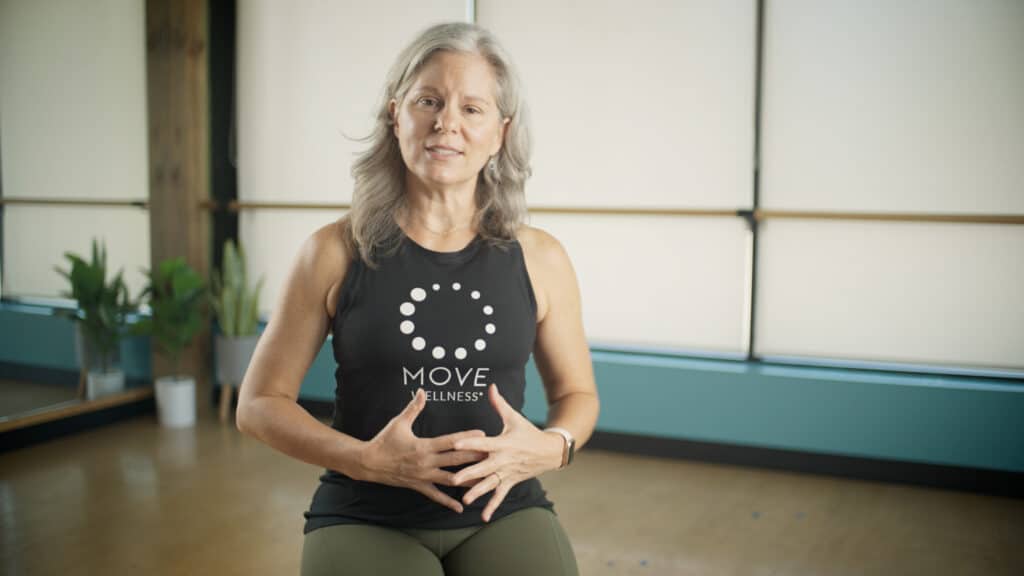

The Anatomy of Breathing
We all know how to breathe. But do you really know the ins and outs of those inhales and exhales? Here’s the nitty gritty of how it works. The physiology of breathing – the exchange of oxygen into the bloodstream and release of carbon dioxide outside of the body – is essential for all the systems in the body to work properly.
When we breathe, we are carefully coordinating the muscles of the trunk. The diaphragm, deepest abdominal muscles and pelvic floor are all working together. This anatomy of breathing positively impacts our musculoskeletal system and optimizes the coordination and efficiency of all the systems in the body.
We inhale through our nose with the goal of expanding our torso three-dimensionally. We want the air to get all the way to the bottom of the lungs and expand the bottom ribs. We want to try to do this without lifting our shoulders or using neck muscles as we inhale.
Then, our deep core stabilizers, the transverse abdominis, diaphragm, and pelvic floor will all expand. This gives our organs a little ‘breathing room’. During exercise other muscles can be recruited to help increase the expansion of the ribs to allow for greater air intake.
In normal breathing, exhalation is relatively passive and the breathing muscles’ tone helps encourage a full stimulation of the system. When we use a forceful and purposeful exhalation, it contracts our abdominal muscles to press the diaphragm upward and force the air out of our lungs.
Most often, we aren’t conscious of the way our muscular system supports breathing. But in Pilates class, we are purposefully stimulating the muscular system that supports the breath. We use coordinated breathing to build tone, organization, and coordination. As we age, it becomes more important to keep the tone and coordination of these muscles, especially in our pelvic floor.
What Type of Breathing Should Be Done During Pilates?
Joseph Pilates said, “The breath shapes the movement and defines its dynamic.” When we first teach people how to be aware of their breath when they move, it often feels confusing. We start by teaching them to breathe using a diaphragmatic breathing technique.
We want to optimize a full three-dimensional inhalation without overusing any one set of muscles. This brings tone and awareness to the entire breathing unit in your trunk.
As is true in many aspects of Pilates, we quickly learn this is the way our bodies are meant to move. It becomes much easier with a little practice. Again and again, I see that clients don’t have to think about it after a couple of classes or sessions.
Some benefits of breathing this way are:
- Improved focus
- Increased control
- Abdominal engagement
- Higher energy levels
- Better circulation
- Tension relief
- Lower blood pressure
How Do You Breathe When Doing Pilates?
People often ask me questions like: Why are we breathing in this particular way? Why do we talk so much about breathing?
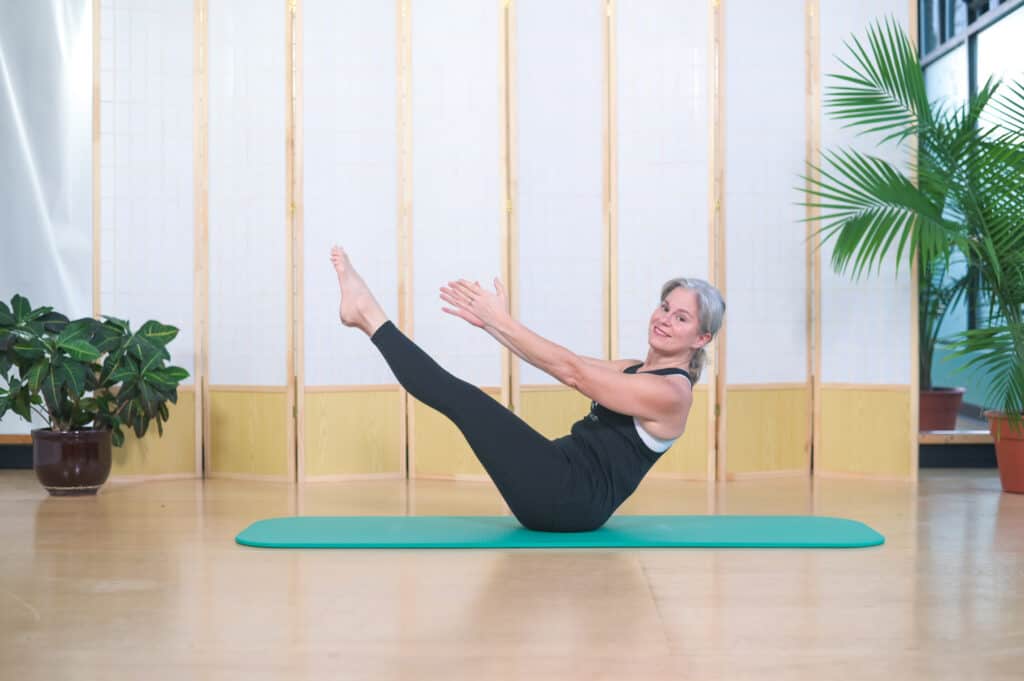

Here’s the thing. There is so much impact and power in breathing well. Not just in Pilates, but in life and anything you love to do. When teaching the Pilates basics, we first teach diaphragmatic breathing.
You will allow your breath to expand your lower ribs. The feeling of expansion will move down into your trunk on the inhale.
On the exhale, you’ll feel the closing of the ribs and connection of the abdominals.
In Pilates, we practice bringing focus on how we breathe to tone and coordinate the deep abdominal muscles, diaphragm and pelvic floor. You may notice the way your spine moves as you breathe. When you inhale, your spine extends. On exhale, you’ll feel some flexion in your spine.
Sometimes it’s confusing to hear ‘inhale’ and ‘exhale’ constantly while trying to move through the Pilates repertoire and exercises. That is completely normal. In the end, moving and breathing at the same time is the goal, and everyone gets it after a session or two.
In Pilates, we breathe to organically support the movement or exercise we’re doing. We use the inhale and exhale cues to pattern our breathing for abdominal engagement and spinal movement. We can then use the pattern of breath to challenge these principles as students become more advanced.
When we breathe well, we are nourishing every system of the body to operate optimally. You just might leave Pilates with more energy than when you came in.
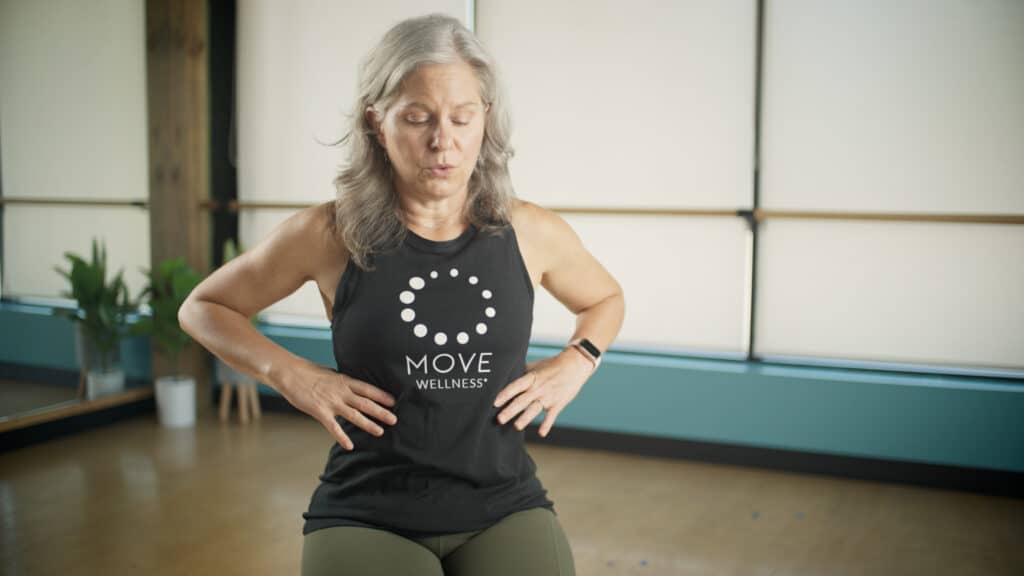

What Is Lateral Breathing in Pilates?
When you’ve learned to utilize diaphragmatic breathing, you’ll be able to organically organize the musculature of your core. The next step is to learn lateral breathing where you will be challenged to keep your abdominals fully engaged during inhale.
In lateral breathing, the breath is focused into an outward expansion of our ribs while drawing our abdominal muscles inward. Unlike in diaphragmatic breathing where we release our abdominals on our inhale, in lateral breathing we keep them drawn tight during both inhalation and exhalation.
Lateral breathing helps stabilize our core and maintain deep abdominal support to our movements, particularly more advanced movements.
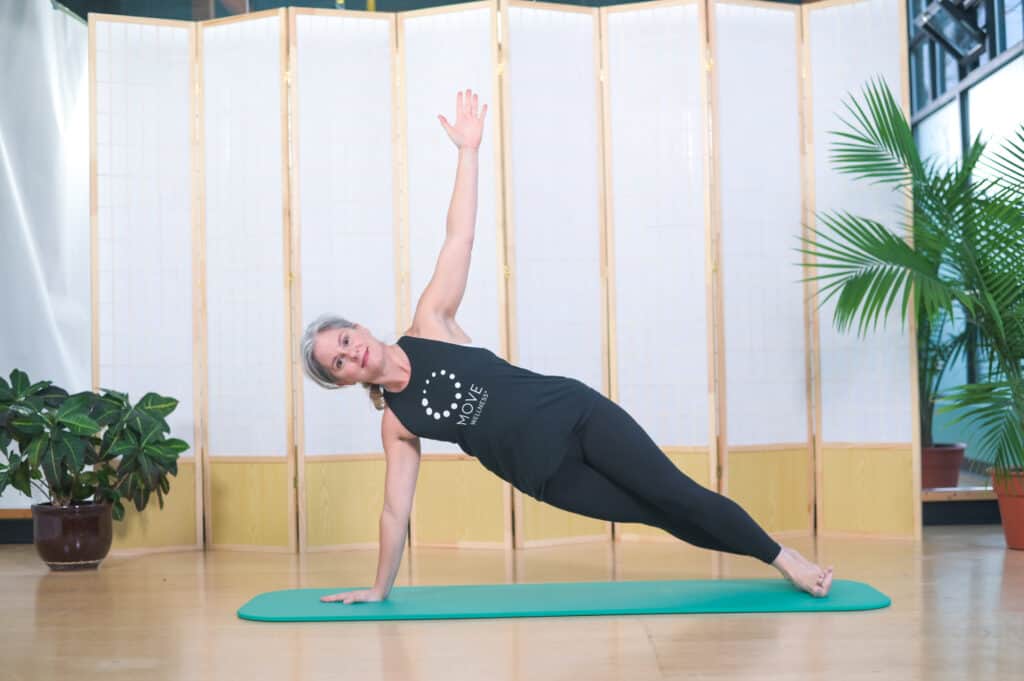

Why Is Correct Breathing Important in Pilates?
Breathing in Pilates can be used to set the tone of a training session. A client holding a lot of tension can use a more mindful breathing pattern to relax. Those looking for a more vigorous session can use a more forceful breathing pattern to activate targeted muscle groups and intensify their session.
Breathing well with the guidance of a certified trainer will help support your movement at any level and enhance your workout.
As important as it is to connect to your abdominals when you breathe, outside of Pilates class try not to hold them in with too much tension. Even our abs need a breather, and their resilience is key! Too much tension and ‘gripping’ sensation can bring strain to other parts of your body and leave you susceptible to injury.
The good news? Focusing on breathing during Pilates helps bring awareness to how your body feels so you don’t have to focus on it for the rest of your day. Practicing proper breathing will bring ease and release tension in the body. You’ll feel more energized!
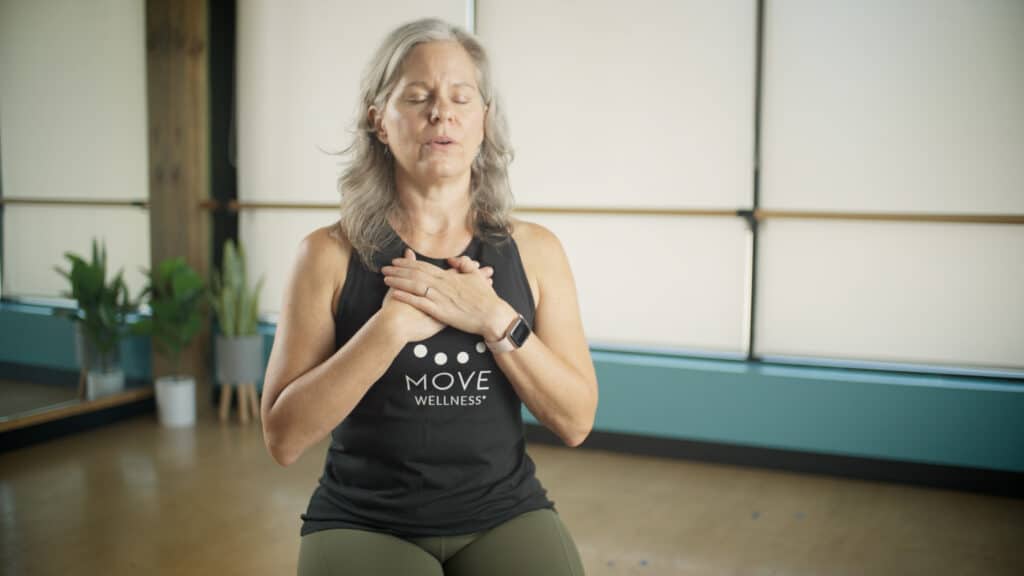

Is Pilates Breathing the Same as Yoga Breathing?
The short answer is no. It’s not just yoga vs. Pilates. GYROTONIC® and GYROKINESIS® exercise, various martial arts, swimming, dance, and more all have specific breathing patterns to support movement. It’s important to know that practicing all different types of breathing is really good for us.
Anything with coordinated breathing is stimulating that muscular system. Each practice brings different stimulation to the body while moving.
Mindfulness, or bringing awareness, goes hand in hand with what we try to accomplish in Pilates. Breathing is a tool you have available to you to care for your nervous system and reduce stress and tension. We want you to feel that you move your body to help it toward its fullest potential. The goal is to be aware of the present moment without judgement so you can live a life that you love.
These ideas are becoming more commonly integrated into our understanding of human movement and fitness. How we breathe plays an important role in how fit we are and how fit we can get. And, in fact, how breathing impacts our overall health.
How Can I Start a Pilates Breathing Practice?
My video above is a great place to start. I’ll talk you through the basics, and we’ll do some breathing exercises together to get a feel for it. When you’re ready for more, you may want to look at my program Movement Essentials: Getting Started with Pilates.
Wherever you are in your movement journey and breathing practice, I hope you’ll keep moving this week. We know the more we move, the better we feel.
Do you breathe on purpose? What type of breathing do you practice? Have you tried Pilates breathing? Do you think it’s different from your day-to-day physiological breathing? What benefits have you noticed for yourself?













